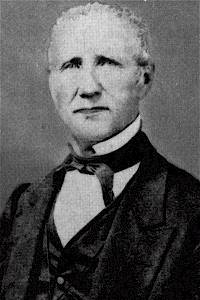
Double Springs is a town in Winston County, Alabama, United States. The city is the county seat of Winston County. The county seat was initially located at Houston, but by referendum in 1883, Double Springs prevailed and it was removed to there. It was incorporated on May 17, 1943. At the 2010 census the population was 1,083, up from 1,003 in 2000.

Shape notes are a musical notation designed to facilitate congregational and social singing. The notation, introduced in late 18th century England, became a popular teaching device in American singing schools. Shapes were added to the noteheads in written music to help singers find pitches within major and minor scales without the use of more complex information found in key signatures on the staff.

Sacred Harp singing is a tradition of sacred choral music that originated in New England and was later perpetuated and carried on in the American South. The name is derived from The Sacred Harp, a ubiquitous and historically important tunebook printed in shape notes. The work was first published in 1844 and has reappeared in multiple editions ever since. Sacred Harp music represents one branch of an older tradition of American music that developed over the period 1770 to 1820 from roots in New England, with a significant, related development under the influence of "revival" services around the 1840s. This music was included in, and became profoundly associated with, books using the shape note style of notation popular in America in the 18th and early 19th centuries.
Alabama has played a central role in the development of both blues and country music. Appalachian folk music, fiddle music, gospel, spirituals, and polka have had local scenes in parts of Alabama. The Tuskegee Institute's School of Music, especially the Tuskegee Choir, is an internationally renowned institution. There are three major modern orchestras, the Mobile Symphony, the Alabama Symphony Orchestra and the Huntsville Symphony Orchestra; the last is the oldest continuously operating professional orchestra in the state, giving its first performance in 1955.
A singing school is a school in which students are taught to sightread vocal music. Singing schools are a long-standing cultural institution in the Southern United States. While some singing schools are offered for credit, most are informal programs.

William Walker was an American Baptist song leader, shape note "singing master", and compiler of four shape note tunebooks, most notable of which are the influential The Southern Harmony and The Christian Harmony, which has been in continuous use.
Thomas Jackson Denson was a notable Alabama musician and singing school teacher within the Sacred Harp tradition.
Wilson Marion Cooper of Dothan, Alabama, was a notable musician and music teacher within the Sacred Harp tradition. Marion Cooper was born in Henry County, Alabama, the son of W. S. and Elizabeth Ann (Oates) Cooper. He was a cousin of Alabama governor William C. Oates.
James Landrum White was a shape note singing teacher, composer, and a reviser of his father's shape note tunebook known as The Sacred Harp.
Joseph Stephen James, of Douglasville, Georgia, was a lawyer, community leader, shape note singer, composer, and a reviser of the tunebook known as The Sacred Harp.
The Chattahoochee Musical Convention is a Sacred Harp singing convention. It is an annual gathering whose purposes are worship, through the singing of Sacred Harp music, and fostering of bonds of fellowship among singers. It bears the distinction of being the oldest surviving Sacred Harp musical convention, having been founded in 1852.
The Sacred Harp is a shape note tunebook, originally compiled in 1844 by Benjamin Franklin White and Elisha J. King in Georgia and used to this day in revised form by Sacred Harp singers throughout America and overseas. This article is a historical overview and listing of the composers and poets who wrote the songs and texts of The Sacred Harp.
The Alabama Sacred Harp Singers were any of the informal groups participating in four recorded Sacred Harp singing sessions in Alabama in the 20th century, who were thereafter credited by that name as artists or performers in the published versions of those recordings.

Hugh McGraw was a leading figure in contemporary Sacred Harp singing. He was the General Chairman of the committee that created the 1991 Denson revision of The Sacred Harp and played an important role in promoting the spread of Sacred Harp singing. Sacred Harp scholar Buell Cobb has called him "perhaps the chief promoter and good will agent of Sacred Harp music".

Arbacoochee is an unincorporated community in Cleburne County, Alabama, United States.
Seaborn is a given name and a surname. Notable persons with that name include:
Judge J. Jackson was an American sacred harp composer, songwriter, and educator. His 1934 publication The Colored Sacred Harp was later recognized by scholars such as Doris Dyen and New Grove writer Joe Dan Boyd as an important document of early twentieth-century shape note singing practice.

Alfred Marcus Cagle was an American hymnwriter known for his activities with the Sacred Harp movement.
Jarusha Henrietta Denson Edwards, better known as Ruth was a figure in the Sacred Harp movement.








